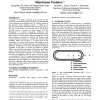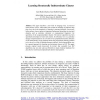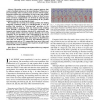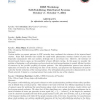541 search results - page 85 / 109 » An Efficient Algorithm for the Longest Pattern Subsequence P... |
KDD
2003
ACM
14 years 9 months ago
2003
ACM
A number of medically important disease-causing bacteria (collectively called Gram-negative bacteria) are noted for the extra "outer" membrane that surrounds their cell....
ILP
1998
Springer
14 years 26 days ago
1998
Springer
This paper describes a new kind of language bias, S-structural indeterminate clauses, which takes into account the meaning of predicates that play a key role in the complexity of l...
TCSV
2008
13 years 8 months ago
2008
Recurring events are short temporal patterns that consist of multiple instances in the target database. Without any a priori knowledge of the recurring events, in terms of their le...
OPODIS
2004
13 years 10 months ago
2004
S (in alphabetic order by speaker surname) Speaker: Uri Abraham (Ben-Gurion University) Title: Self-Stabilizing TimeStamps : Speaker: Anish Arora (Ohio State) Title: Self-Stabilizi...
BMCBI
2005
13 years 8 months ago
2005
Background: Recent studies have shown that the patterns of linkage disequilibrium observed in human populations have a block-like structure, and a small subset of SNPs (called tag...




